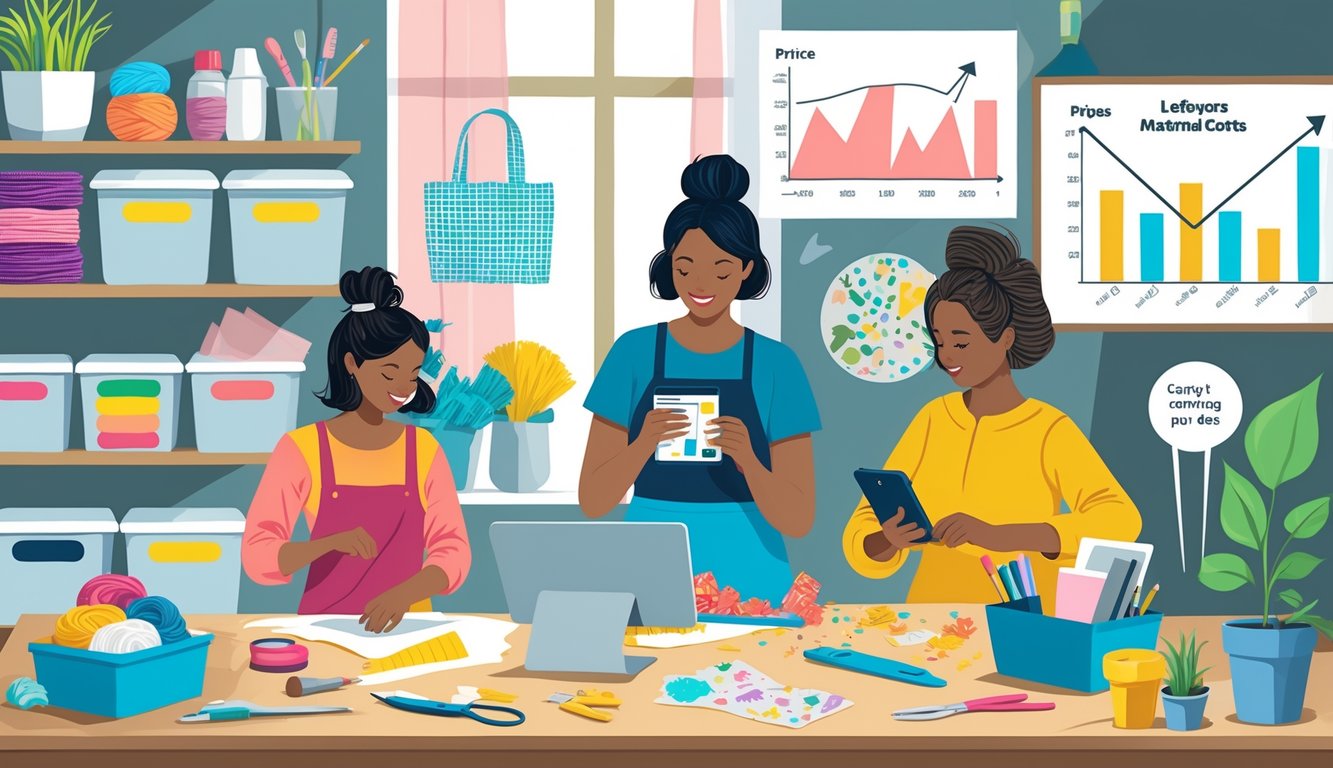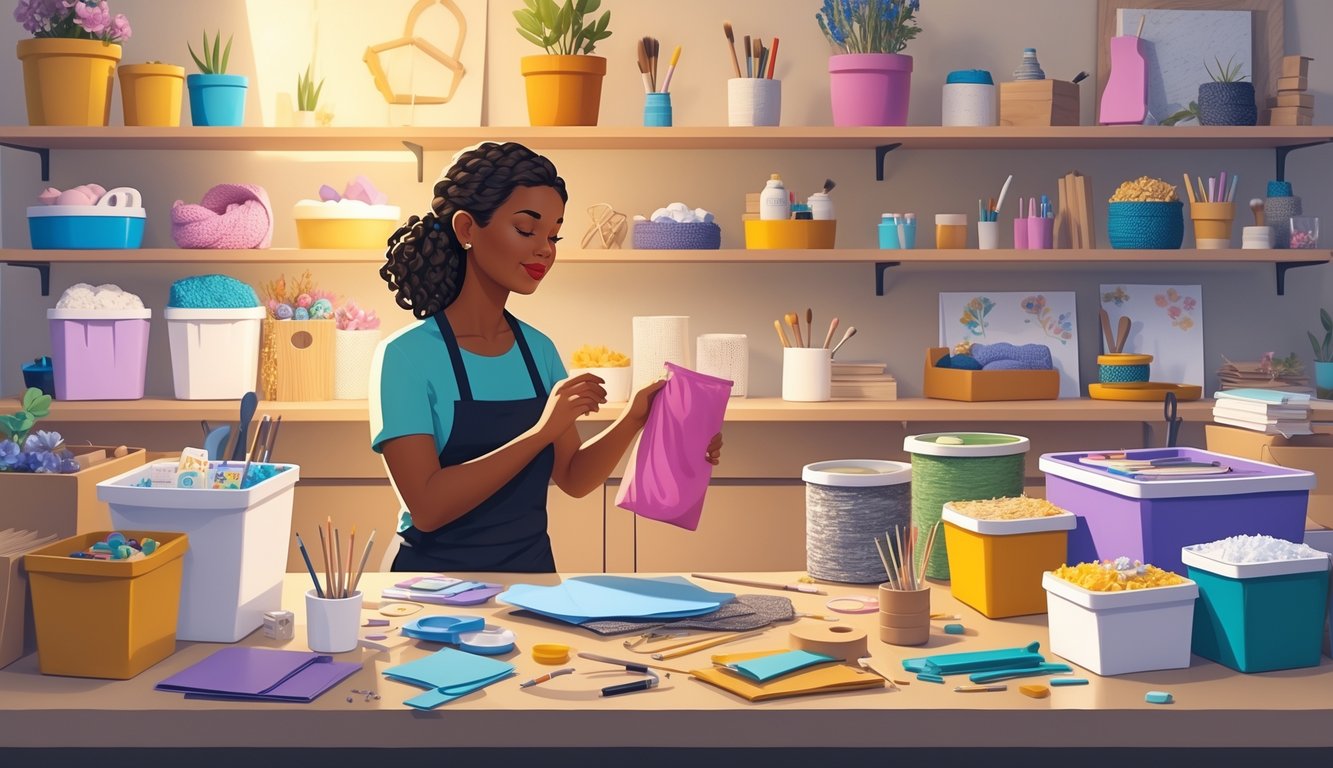
Smart Shopping: How to Shop Around Effectively
Is it just me, or is shopping for craft supplies during a price spike like whack-a-mole but with less satisfaction? One minute there’s a “clearance” on yarn, next moment the paint costs double. There’s no winning, just endless coupon code hunting, sketchy markdowns, and that one shop owner who “can’t” discount but always slips you a secret 12% off if you mention last month’s promo. Sometimes knowing where not to shop is the real skill.
Comparing Local and Online Suppliers
Every time I think big-box chains will save me time, someone online’s selling the same beads for half price plus “free” shipping—unless you don’t live in the right zip code. Comparing prices isn’t about the lowest sticker, it’s about real pickup times, honest reviews (not the “great product!” bots), and whether the paint is actually still wet inside the tube.
Last month, I checked three local shops, two warehouse art suppliers, and ran a price comparison online. I just wanted someone to admit gouache shouldn’t cost $3 a tube now. Sneaky thing: some sites change prices based on your browser or history (Chrome vs. Safari? Really?). So I use incognito or switch browsers for a better deal. And ever since I got a local store to match an online price just by showing my phone, I stopped assuming in-person meant “no negotiation.”
Taking Advantage of Sales and Discounts
Flash sales always say “limit 2 per customer,” but nobody stops you from coming back five minutes later. Coupon finders like Honey only work on desktop, so I’m juggling my phone for reviews and my ancient laptop for codes. Annoying, but whatever.
Best deals I ever got were waiting for end-of-season clearance. My friend swears by pre-holiday markdowns on “misprint” scrapbooking paper—sometimes five cents a sheet. Stacking discounts feels like cheating the system—sitewide codes plus “pickup in-store” promos sometimes sneak through together. And unlocking promos by picking up in-store beats waiting for lost packages, unless the clerk gives you side-eye for showing up again.
Building Relationships with Suppliers
I used to think loyalty cards made me special, but honestly? Janine at the downtown notions shop gives me first dibs on damaged packaging sales just because I chat about fabric, not because of a punch card. Turns out, if you’re the person asking for odd-lot inventory or offering cash for remnants, they start setting things aside for you.
A friend’s pottery supplier emails a secret earlybird list—those discounts never hit the website. Bulk orders sometimes get me a surprise box of discontinued ribbon, apparently because the owner “knew I’d do something weird with it.” If you build rapport, suppliers become allies. They’ll tip you off to markdowns or let you stack coupons “unofficially.” Once, I got three extra paintbrushes because I spotted a double-charge on my receipt. No schmoozing, just being someone they remember when they find a box of weird buttons.
Does this work for everyone? No clue. But nobody gives the good deals to the “just browsing” crowd.
Affordable Alternatives to Expensive Materials

Paint fumes, glue stuck to my fingers, and yeah, I’m still staring at the receipt wondering why a bag of popsicle sticks costs more than my lunch. Seriously, are we making space shuttles or just a plant stand? Prices go up, everyone whines, I whine, then I start eyeballing the neighbor’s recycling bin and the dollar store like some kind of desperate scavenger. You ever notice lumber is now, what, $12 a stick? I swear, cereal is cheaper than plywood. I’m not even exaggerating.
Exploring Alternative Materials
So, “duck tape fabric” exists, which, okay, that’s just tape on tape but people sell it on Etsy and act like it’s couture. Cereal boxes as chipboard? I’ve literally rescued cardboard from the sidewalk mid-walk, and it’s fine. Some Etsy folks swear brown paper bags are better for sketching than the “premium” stuff. They’re not wrong; I tried it, and my mechanical pencil didn’t even rip through. Resin molds? Don’t get me started. Ice cube trays from the dollar store do the job, unless you want something fancy, in which case, just use a soap mold. Pool noodles instead of Styrofoam—why not? I saw that in a budget crafts roundup, and now I hoard pool noodles like a weirdo. Bedsheets for fabric? Thrifted, five bucks, and the patterns are so loud my cat hid under the couch. Bought “decorative felt” once, and the only one who loved it was my cat, who shredded it. Lesson learned.
Choosing Between Lumber, Concrete, and More
Twelve bucks for a four-by-four? No, thanks. My friend built a whole bench from free pallets and got so many splinters he still finds them months later. Cheap plywood warps, sure, but if I’m painting it, who’s checking? Hardware store folks (the ones who actually work there, not the salespeople) will point you to the “contractor cuts”—janky, short, but like half price. Concrete planters? Forget the fancy silicone forms. Most people I follow on Instagram use yogurt containers and leftover builder’s mix. Plastic bins as garden edging—Pinterest hates it, but it works. Family Handyman says coffee cans make tools, which sounds dumb, but I’ve done it and it’s fine. Bricks from a neighbor’s yard prop up my shelves. Not pretty, but I sleep fine.



